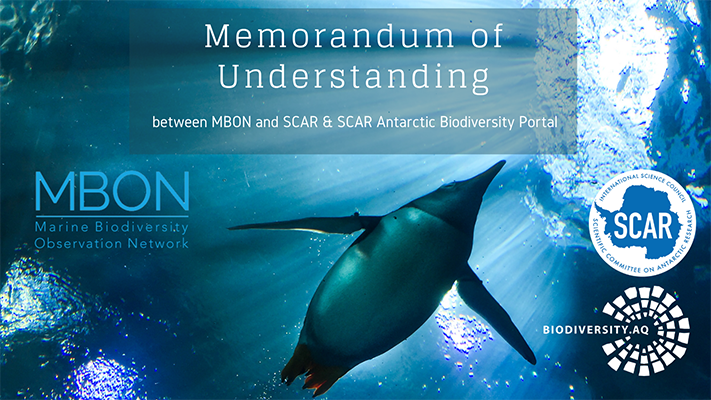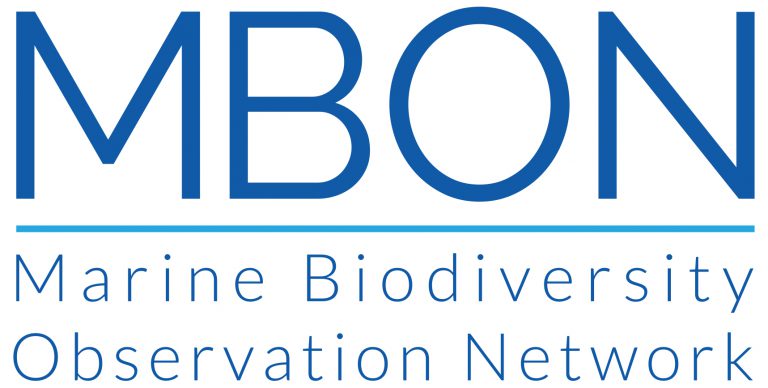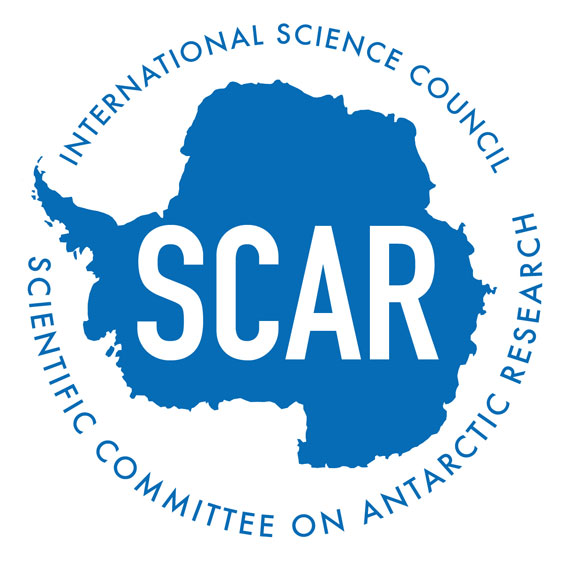Coordinating the observation of biodiversity in the sea:
A collaboration spanning the Southern Ocean and the Rest of the Globe

The Marine Biodiversity Observation Network (MBON) of the Group on Earth Observations Biodiversity Observation Network (GEO BON), the Scientific Committee on Antarctic Research (SCAR), and the SCAR Antarctic Biodiversity Portal share a common vision on the building and coordination of a global ocean biodiversity observation system. The common goal is to systematically assess the state and trends in the ocean’s biodiversity, including biological resources and ecosystems, and how these will change in the future.
This observing system will provide the data, information and knowledge that people need to effectively conserve and sustainably use marine life. The Southern Ocean, the ocean basin around the Antarctic continent, and all ocean water beyond Exclusive Economic Zones (EEZ) represent such a “commons” to humanity. Minding these waters from the surface to the abyss, and especially life in these areas, will inform progress towards safeguarding the environment and protecting the integrity of the ecosystem of the seas surrounding Antarctica as outline in the Convention for the Conservation of Antarctic Marine Living resources (CCAMLR), the global 2030 targets of the UN Sustainable Development Goals (including SDG 14) and the UN Ocean Decade, and the new 2050 targets and indicators of the Convention on Biological Diversity (CBD).
The agreement between MBON, SCAR, and the SCAR Antarctic Biodiversity Portal recognizes an ongoing cooperation to reinforce ocean biodiversity observing capacity, and to make use of the best available resources and expertise. The entities agree to collaborate respecting the principles of reciprocity, mutual benefit and results sharing, as well as to strengthen the exchange of ideas and integration with global marine data initiatives such as the Global Ocean Observation System (GOOS), the Ocean Biodiversity Information System (OBIS), the Ocean Best Practices System (OBPS), Marine Life 2030, and others.
The actors:
 The Marine Biodiversity Observation Network (MBON) is the key biodiversity pillar of the Group on Earth Observations Biodiversity Observation Network (GEO BON) for the marine realm. The MBON is a community of practice that facilitates the coordination of individual monitoring programs and existing networks focused on local, regional, and thematic aspects of marine biology and biodiversity, to improve standards and best practices in the collection, management, and publication of marine biodiversity data and the status and trends of ecosystems and their services.
The Marine Biodiversity Observation Network (MBON) is the key biodiversity pillar of the Group on Earth Observations Biodiversity Observation Network (GEO BON) for the marine realm. The MBON is a community of practice that facilitates the coordination of individual monitoring programs and existing networks focused on local, regional, and thematic aspects of marine biology and biodiversity, to improve standards and best practices in the collection, management, and publication of marine biodiversity data and the status and trends of ecosystems and their services.
 The Scientific Committee on Antarctic Research (SCAR) is a thematic organisation of the International Science Council (ISC), and was created in 1958. SCAR is charged with initiating, developing and coordinating high quality international scientific research in the Antarctic region (including the Southern Ocean), and on the role of the Antarctic region in the Earth system. SCAR provides objective and independent scientific advice to the Antarctic Treaty System and other organizations such as the United Nations Framework Convention on Climate Change (UNFCCC) and the Intergovernmental Panel on Climate Change (IPCC) on issues of science and conservation affecting the management of Antarctica and the Southern Ocean and on the role of the Antarctic region in the Earth system.
The Scientific Committee on Antarctic Research (SCAR) is a thematic organisation of the International Science Council (ISC), and was created in 1958. SCAR is charged with initiating, developing and coordinating high quality international scientific research in the Antarctic region (including the Southern Ocean), and on the role of the Antarctic region in the Earth system. SCAR provides objective and independent scientific advice to the Antarctic Treaty System and other organizations such as the United Nations Framework Convention on Climate Change (UNFCCC) and the Intergovernmental Panel on Climate Change (IPCC) on issues of science and conservation affecting the management of Antarctica and the Southern Ocean and on the role of the Antarctic region in the Earth system.
 The Antarctic Biodiversity Portal (biodiversity.aq) is an international effort of SCAR. It finds it roots in the Census of Antarctic Marine Life and started in 2005. It seeks to increase our knowledge and understanding of Antarctic and Southern Ocean biodiversity. The SCAR Antarctic Biodiversity Portal is the regional thematic node of the Ocean Biogeographic Information System (OBIS), the Global Biodiversity Information Facility (GBIF) and works closely together with the Southern Ocean Observation System (SOOS). It provides support to publish Southern Ocean biodiversity data and to improve standards and best practices in the collection, management, and publication of marine biodiversity data.
The Antarctic Biodiversity Portal (biodiversity.aq) is an international effort of SCAR. It finds it roots in the Census of Antarctic Marine Life and started in 2005. It seeks to increase our knowledge and understanding of Antarctic and Southern Ocean biodiversity. The SCAR Antarctic Biodiversity Portal is the regional thematic node of the Ocean Biogeographic Information System (OBIS), the Global Biodiversity Information Facility (GBIF) and works closely together with the Southern Ocean Observation System (SOOS). It provides support to publish Southern Ocean biodiversity data and to improve standards and best practices in the collection, management, and publication of marine biodiversity data.
